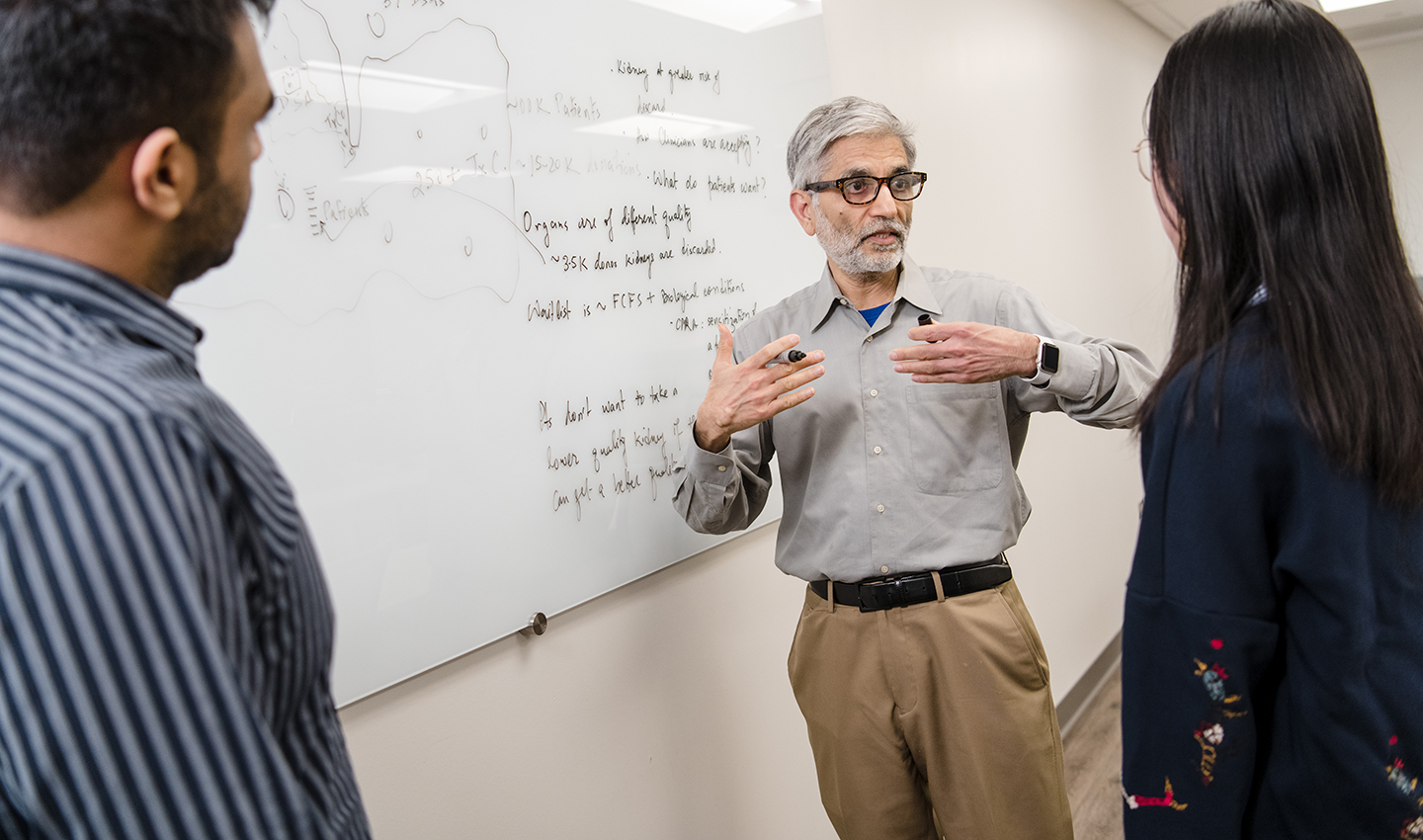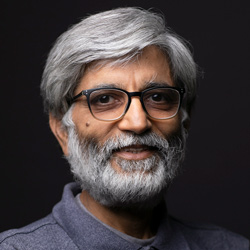One Northwestern Researcher’s Mission to Elevate Healthcare
Sanjay Mehrotra has devoted the last half of his research career to improving healthcare decision-making

Northwestern Engineering’s Sanjay Mehrotra devoted the early part of his research career to optimization algorithms and modeling. In fact, he found a successful niche advising hedge funds on buying and selling to maximize returns.
One fateful weekend 20 years ago, however, forever altered his professional trajectory.
When Mehrotra began feeling discomfort in his chest on Saturday morning, he attributed the pain to typical daily activities – perhaps a meal or muscle strain. As the pain persisted into the afternoon, Mehrotra relayed his condition to a cardiologist. By nighttime, Mehrotra’s wife was hustling him to a local emergency room. While staff reasoned something was off, they lacked the resources and staffing to deliver an immediate diagnosis.

By Sunday morning, Mehrotra’s condition had become critical. Nurses pushed to stabilize the 40-year-old and doctors ordered tests and scans to generate a formal diagnosis. Eventually, doctors determined Mehrotra suffered a cardiac tamponade, a potentially fatal event in which fluid collects in the sac surrounding the heart and thwarts its operation. Doctors blindly entered Mehrotra’s chest to puncture the pericardial sac and relieve pressure.
“Had I not gone to the ER that night, I would have died and nobody would’ve known why,” said Mehrotra, professor of industrial engineering and management sciences.
A revised research focus
The near-death experience awakened Mehrotra to the clumsiness of the healthcare system and prompted a deeper investigation of the nation’s healthcare landscape.
And Mehrotra struggled to reconcile his findings.
While individual corners of the healthcare field often optimized their specific domain, Mehrotra discovered a largely disjointed system riddled with inefficiencies and waste. He saw a massive industry stifled by siloed thinking, which hindered patient care. He also recognized an antidote: engineering’s systems thinking.
“If we could look at the big picture within a scientific, mathematical framework, I really thought I could help improve things in my own little capacity,” said Mehrotra, who first joined Northwestern’s faculty ranks in 1986.
If we could look at the big picture within a scientific, mathematical framework, I really thought I could help improve things in my own little capacity.
Sanjay MehrotraProfessor of Industrial Engineering and Management Sciences
Mehrotra has since devoted his research career to improving efficiency in the healthcare system, specifically efforts to heighten system performance, reduce waste, and improve productivity. He’s brought his systems engineering perspective to areas like scheduling and operations and offered predictive modeling to inform actions around cardiac events, cirrhosis of the liver, and pandemics.
“You eventually start seeing some successes and momentum builds,” said Mehrotra, who fashions himself a helpful ally to healthcare colleagues committed to optimizing systems and patient care.
Efforts to shift national transplant policy
Most recently, Mehrotra has been working to streamline the kidney allocation process, which sees some 7,000 potential donor kidneys discarded each year. Mehrotra identified addressing “cold time” – the time in which the kidney is out of the donor’s body – as a way to improve the discard rate and better serve the 90,000 Americans awaiting a new kidney.
At present, Mehrotra said, there is a 30-minute time lapse in transplant program decision-making that increases the cold time and threatens a successful transplant, which often needs to occur within 24 hours.
“In such a tight timeframe that needs to account for logistics like air and ambulance travel, every 30 minutes matter,” said Mehrotra, director of the Northwestern-based Center for Engineering and Health.
The number of minutes that elapse in transplant program decision-making
To make his case for a more expedited process, Mehrotra made an enterprising move: he predicted kidney discard using machine learning. He started with baseline kidney characteristics before forecasting the likelihood of kidneys being transplanted based on a diverse mix of data and variables, such as the donor’s cause of death and health history. His work demonstrated that kidneys at risk of discard could be more accurately identified using machine learning techniques.
“If you know that a kidney is going to be rejected in the current allocation system, then you can say, ‘Look, this is a kidney I need to pay attention to very early on and send it down a more expedited pathway where it doesn’t accumulate that much cold time and can still get transplanted,’” Mehrotra said.
In addition to developing kidney allocation algorithms to rescue viable donor kidneys from discard and publishing his promising findings, Mehrotra has also crafted a proposal for leadership at the Organ Procurement and Transplantation Network (OPTN), urging them to consider prospective interventions to the nation’s existing transplant policy. Over the next year, he hopes to see a shift in national policy, particularly one that favors the use of data-informed efforts to accelerate decision making and reduce cold time.
“At the end of the day, you’re taking a system that’s less than perfect and finding concrete ways to optimize it so an improved process can save lives,” he said. “That’s energizing and important work with a wonderful benefit to individuals and families.”